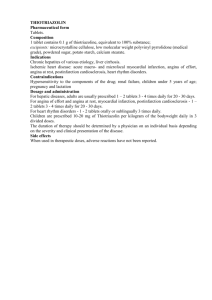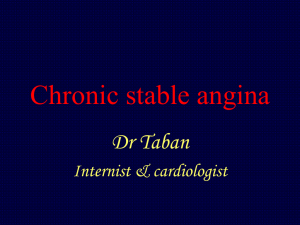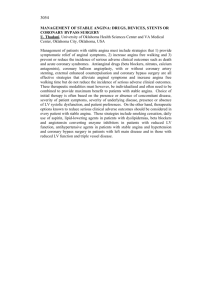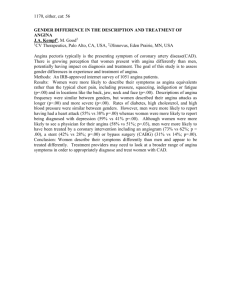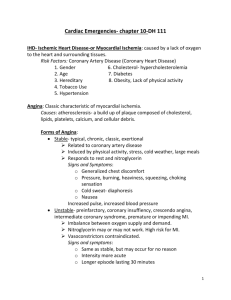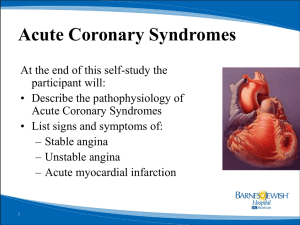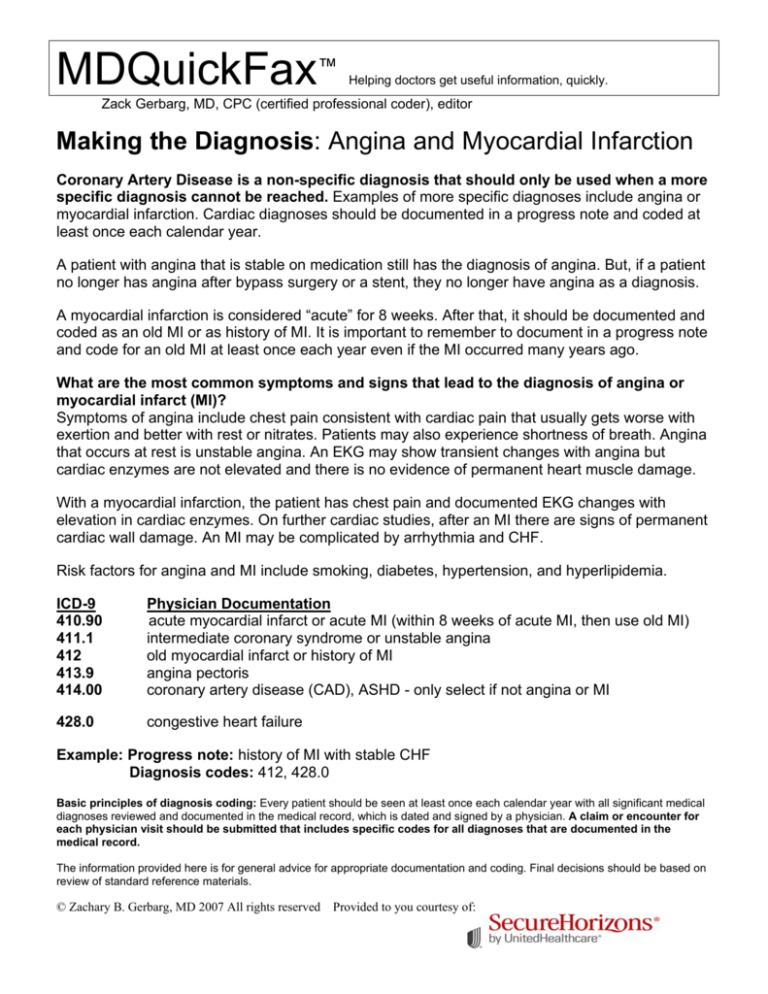
MDQuickFax™
Helping doctors get useful information, quickly.
Zack Gerbarg, MD, CPC (certified professional coder), editor
Making the Diagnosis: Angina and Myocardial Infarction
Coronary Artery Disease is a non-specific diagnosis that should only be used when a more
specific diagnosis cannot be reached. Examples of more specific diagnoses include angina or
myocardial infarction. Cardiac diagnoses should be documented in a progress note and coded at
least once each calendar year.
A patient with angina that is stable on medication still has the diagnosis of angina. But, if a patient
no longer has angina after bypass surgery or a stent, they no longer have angina as a diagnosis.
A myocardial infarction is considered “acute” for 8 weeks. After that, it should be documented and
coded as an old MI or as history of MI. It is important to remember to document in a progress note
and code for an old MI at least once each year even if the MI occurred many years ago.
What are the most common symptoms and signs that lead to the diagnosis of angina or
myocardial infarct (MI)?
Symptoms of angina include chest pain consistent with cardiac pain that usually gets worse with
exertion and better with rest or nitrates. Patients may also experience shortness of breath. Angina
that occurs at rest is unstable angina. An EKG may show transient changes with angina but
cardiac enzymes are not elevated and there is no evidence of permanent heart muscle damage.
With a myocardial infarction, the patient has chest pain and documented EKG changes with
elevation in cardiac enzymes. On further cardiac studies, after an MI there are signs of permanent
cardiac wall damage. An MI may be complicated by arrhythmia and CHF.
Risk factors for angina and MI include smoking, diabetes, hypertension, and hyperlipidemia.
ICD-9
410.90
411.1
412
413.9
414.00
Physician Documentation
acute myocardial infarct or acute MI (within 8 weeks of acute MI, then use old MI)
intermediate coronary syndrome or unstable angina
old myocardial infarct or history of MI
angina pectoris
coronary artery disease (CAD), ASHD - only select if not angina or MI
428.0
congestive heart failure
Example: Progress note: history of MI with stable CHF
Diagnosis codes: 412, 428.0
Basic principles of diagnosis coding: Every patient should be seen at least once each calendar year with all significant medical
diagnoses reviewed and documented in the medical record, which is dated and signed by a physician. A claim or encounter for
each physician visit should be submitted that includes specific codes for all diagnoses that are documented in the
medical record.
The information provided here is for general advice for appropriate documentation and coding. Final decisions should be based on
review of standard reference materials.
© Zachary B. Gerbarg, MD 2007 All rights reserved Provided to you courtesy of:

